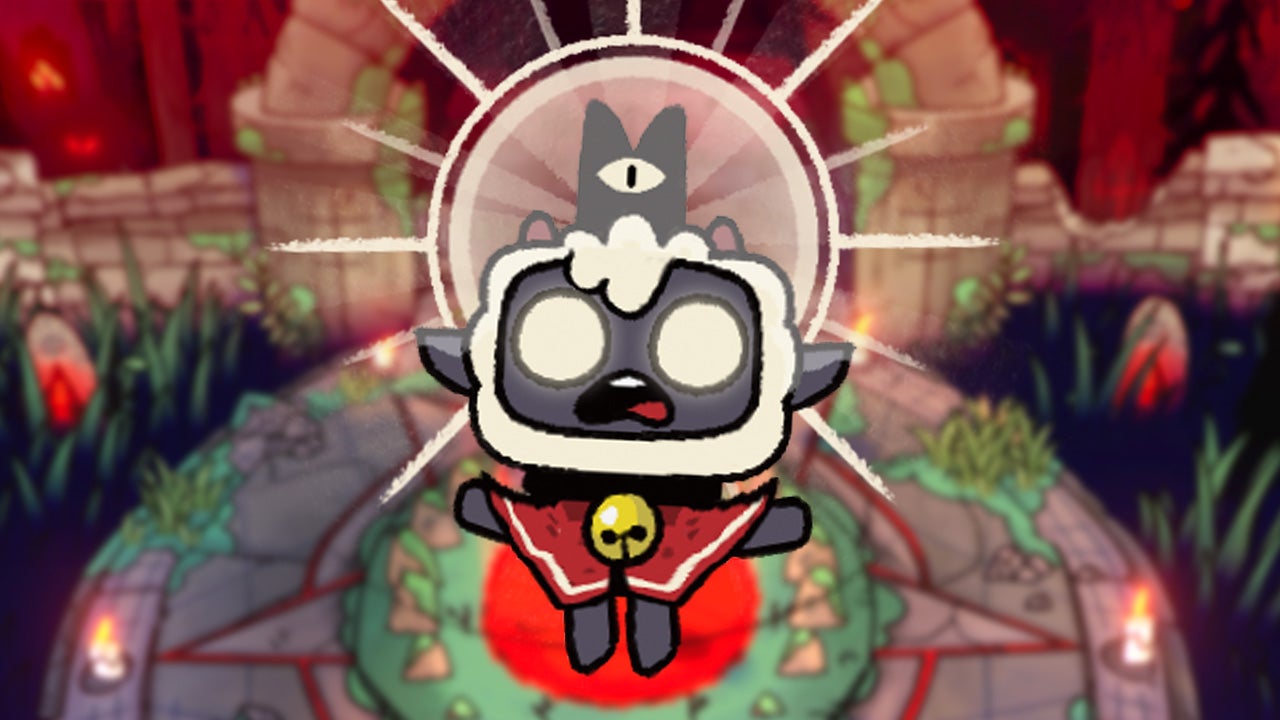Rogue (Epyx, 1980) defined a genre in video games. Procedurally generated dungeons, items, and enemies made for an infinitely replayable game. Recent years have seen the release of numerous so-called “roguelike” games, including Hades (Supergiant Games, 2020), Dead Cells (Motion Twin, 2018), and The Binding of Isaac: Rebirth (Nicalis, inc., 2014). What makes these games roguelike? They all use elements from Rogue as a base, for example all of the games listed above use procedurally generated dungeons and have enemies that you need to fight and defeat to progress through different stages of the game, and they all have the same focus on replayability. However, a recent “roguelike” game takes a completely new, never-seen-before spin on this familiar genre of games.
Cult of the Lamb (Massive Monster, 2022) uses quite a few Rogue elements: procedural dungeon generation, random weapons, and item drops to name a few. But after playing it for a while, it doesn’t really feel like a traditional roguelike. Most roguelikes operate on what I would call a “Game Over Minus” system. Take The Binding of Isaac as an example: if you die during a run, that’s it. The run ends, you are met with a game over screen, and you are taken back to the main menu where you can select a character and start another run. However, if you made it far enough in your run and you beat the right bosses, you would unlock new items, enemies, floors, and bosses that you can encounter in your future runs. Replayability. In The Binding of Isaac, a player is only going to spend around 30 to 60 minutes per run, but Cult of the Lamb is a much more time-consuming game. The Don’t Starve (Klei Entertainment, 2013) survival aspects combined with the Animal Crossing: New Horizons (Nintendo, 2020) community building elements demand a large portion of the playing time to be dedicated to resource management, as cult followers will starve and get sick if left alone for too long. This cult-building mechanic takes away from the in-game time that can be spent dungeoneering (cutely known as “crusading” within the game) since time continues to pass during a crusade. A benevolent cult leader must take care of their cultists’ needs if they don’t want their cultists to die. Of course, there is a type of skill tree that can speed up resource gathering/food production/sanitation by unlocking buildings that cult followers can use to gather resources, but these buildings are quite expensive in terms of the raw material they need, and I often found myself using materials instead to build/repair shelters for followers that I recruited during my crusades.
These time-consuming mechanics lead to an increased attachment to the save file. As a player, I have spent so much time building my cute little cult that I don’t want any of my cultists to die. I have grown attached to my cult, and no other cult will make me feel the same way. That is to say, I believe that the added non-Rogue mechanics actually make the game less replayable. I don’t want to spend another 50 hours making a new cult. I don’t want to spend another 50 hours chopping wood and mining stone. These mechanics, while novel and certainly complicate the roguelike genre, make the game a lot less replayable, and because of that, a lot less like Rogue than the other games mentioned throughout this post, making it a roguelike most unlike Rogue.


This feature, the “Game Over Minus” feature, also makes it extremely difficult to imagine a game like Cult of the Lamb having permadeath like Rogue does. Could you imagine a 50-hour game forcing you to restart from scratch every time you die?
Also appreciate finding another Don’t Starve fan around. I wonder if that game could be considered a roguelike/roguelite in and of itself?